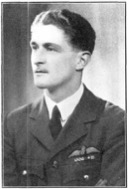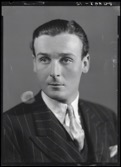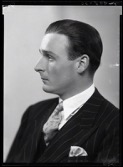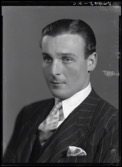Philip Hugh Capel Hanbury

| Rank: | Squadron Leader |
| Regiment: | Royal Air Force Volunteer Reserve, 305 Polish Regiment |
| Country: | Germany |
| Service Number: | 118400 |
| Cemetary/Memorial: | Becklingen War Cemetary (19. A. 13.) |
| Awards: | 1939-45 Medal Star 1939-45 Distinguished Flying Cross and Bar |
Born on 15th September 1920 in Kensington, Squadron Leader Hanbury died on 7th April 1945, aged 24, in Germany.
The son of Brigadier-General Philip Lewis Hanbury (1879-1966), CMG, DSO and of Jessie Hanbury (nee Allan) who had married in India in 1905. His father was Aide-de-Camp to the King. He had three elder sisters, Joan (1907-1975), Marjory (b. 1909) and Elizabeth (b. 1911). Philip was a pupil at St Ronan’s from 1929 to 1933 where he was a keen sportsman, playing in the football, cricket and rugby teams as well as gaining his second star in swimming. His dramatic endeavours are also noted. He won the Form Prize in 1929. He was made a Prefect in 1933. He attended the annual Old Ronian’s Dinner in 1934, 1936 and 1938.

1932 – Saint Ronan’s Cricket XI (Hanbury is back row, right)
He headed to Wellington (1934-1938), where he was School Prefect and Head of Hardinge Dormitory. He was Captain of boxing and of the cricket 2nd XI. He played rugby for the School and was awarded his 2nd XV Colours. At Wellington he was described as “a personality of decided character, considerable wayward charm and keen sensitivity backed by sound judgment.”
He was keen to join the Royal Air Force but was rejected because of his apparently unorthodox answers to the orthodox questions. He went on to attend the Royal Military Academy as a Gentleman Cadet in Woolwich (1939).
Commissioned soon after the war began, he was stationed at an anti-aircraft battery in Scotland before being transferred into the Royal Air Force. He went to North Africa with a squadron of Blenheims and the year he spent there covered the last phases of the Tunisian campaign, the Pantellaria and Sicilian operations and the first landings in Italy. Promoted Flight Lieutenant and awarded the DFC, Hanbury returned to England and after a period as an instructor with medium bombers transferred to Mosquitos.
Squadron Leader Hanbury participated in very many sorties and flew 15 missions with 305 Squadron with work mostly being night bombing and the machine-gunning of roads, railways and special targets. Twice he brought back his machine badly damaged to base with little means of control left and after one of these incidents won a bar to his DFC:
“In February 1945, he took part in a sortie over Germany. After successfully attacking a storage building in the railway sidings at Atterndorf, he also bombed a road/railway bridge. Later, he raked a train with machine gun fire, obtaining numerous hits. After attacking the last named target, Squadron Leader Hanbury had to feather the propeller of one of the engines, which had become overheated. On the return flight his aircraft twice came under considerable light anti-aircraft fire and sustained some damage. In spite of this, Squadron Leader Hanbury flew back to base. He affected a safe landing although both the tyres on the landing wheels had been punctured. This officer has consistently displayed a high standard of skill and courage.”
He was reported missing on the night of 7th April 1945, when his machine crashed near Bergen on the Hamburg–Hanover road.
It is believed that Hanbury’s D.H. Mosquito no. SZ982 (SM-Q) swung on landing and the undercarriage collapsed at Varrelbusch, Germany.] Hanbury and his observer F/Lt. J.P. Hart were killed.



By Bassano & Vandyk Studios, 29th October 1938
Held at the National Portrait Gallery
